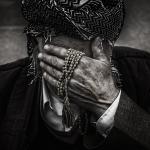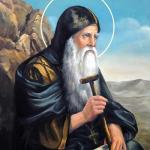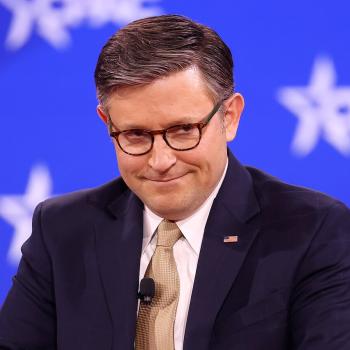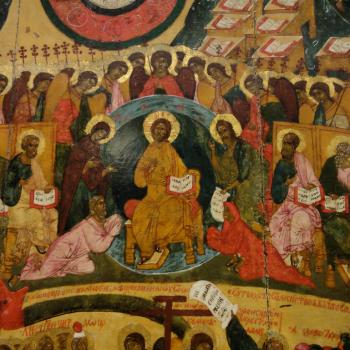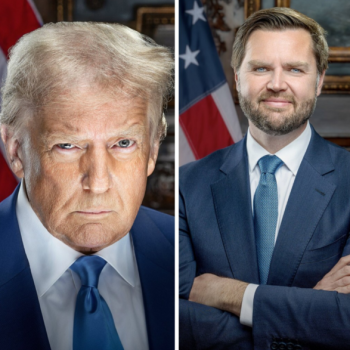
Martin Luther King Jr. understood that the civil rights movement needed to bring all of the people of the United States together. He knew that it needed people from all walks of life, every corner of society, if it were to be successful. He also knew that those who gained the most from systematic injustices would not want things to change, and so they would not only resisting joining in with his work, they would do everything they could to prevent him and the civil rights movement from being successful. To bring about change, society would have to deal with its inner demons; when they were being exorcised, they could and would become violent. Martin Luther King Jr. worked hard to make people realize that, despite the conflicts which emerged, despite the hatred being exposed, and the brutal abuse people faced working for justice, no one could just stand back and do nothing. Everyone is connected with each other, and everyone is adversely affected by injustices, even those who promote and use them. Similarly, everyone would be made better when society changed for the better, even those who feared losing their privilege in society. Thus, Martin Luther King Jr. made it clear, in the United States, success depended upon the way it could and would realize its unity:
We are caught in an inescapable network of mutuality, tied in a single garment of destiny. Whatever effects one directly affects all indirectly. Never again can we afford to live with the narrow, provincial “outside agitator” idea. Anyone who lives in the United States can never be considered an outsider anywhere within its bounds. [1]
While the actions taken to promote justice must, in their own ways, accord with justice, and seek after peace, they must also confront injustices, creating enough tension so that the injustices would no longer be ignored or accepted. “Nonviolent direct action seeks to foster such a tension that a community which has constantly refused to negotiate is forced to confront the issue. It seeks so to dramatize the issue that it can no longer be ignored.” [2]
Those who came with and worked with Martin Luther King Jr. knew they had to come together and stand with him, even if it meant they would find themselves confronted by their own community. Indeed, they realized that they should expect it if their community was filled with those who promoted and supported injustices. Nonetheless, Martin Luther King Jr., despite the challenges he and his movement faced, was able to bring about and establish an interfaith witness which included Roman Catholics, Greek Orthodox, fellow Protestants, Jews, Muslims, Hindus, Buddhists, and many others of good will. Those who worked with him were willing to confront injustices wherever they were found. Certainly, they were warned that promoting justice meant they would face and experience many of the same injustices they were fighting against, but that did not stop them. We must not forget that the best of them put themselves at grave risk; they were threatened, beaten up, or lost their jobs, lost their standing in their community, and even some lost their lives. It is important to remember this, though in such a way not to forget what it was they are fighting for, making sure that their sacrifice is neither forgotten nor gets in the way of our remembrance of the civil rights leaders and what they sacrificed and lost in their work for justice. And this was especially true when we observe the ecumenical and interfaith work centered around civil rights. We can read, for example, how interracial prayer circles were squashed:
An inter-racial prayer group of local church women, many of them wives of well-known Montgomery business and religious leaders, had been meeting for four or five years to sing hymns, pray and have coffee together, but this treasonous conspiracy was wrecked in September of 1958 when the local segregation patriots took down license numbers of those attending ladies, took pictures of them as they came out of the church where they had met, and published their names and the names of their husbands’ businesses in the Home News. [3]
We can also read how faith leaders, like Rabbi Atlas, found themselves at odds with their own community. Rabbi Atlas took part of an interfaith dialogue on civil rights, one which was mentioned in Life magazine:
It all began on the eve of Brotherhood Week, 1956. The Negro radio station in Montgomery had arranged for a special program: “an interfaith trio” which included a Roman Catholic priest, Rabbi Atlas, and a Protestant, the Negro clergyman Rev. Ralph Abernathy. But that very morning Abernathy, along with twenty-five others, had been arrested on an old “inciting to boycott” statute, because of their leadership in the bus strike. The interfaith program was saved, however, when one of the national new services bailed out Rev. Abernathy and drove him direct from jail to the broadcasting studio with not a moment to spare to give his talk on “Brotherhood.”[4]
Sadly, his bold stand did not go well with many members of his own synagogue. While he promoted civil rights and the work needed to be done, many of the board of trustees opposed him and his work: “Of the twenty-seven trustees, the rabbi had only one supporter, who of course was completely overwhelmed at every meeting.”[5] In the end, after offering prayers for those involved in the bus strike, after making it clear he would not back down, he lost his position at the synagogue, requiring him and his family to move and find a synagogue which would accept him and his civil rights work.
Time and time again, the work for justice was a place in which ecumenical and interfaith work could and would be done, but it was also the place in which various faith communities exposed the evil which thrived within them. Many times, to be sure, the evil thrived out of fear; those who did not join in with the work feared what would happen if they did. Indeed, many of them found that what they did was being used by critics of the civil rights movement, saying that they represented bad influences which explained why the civil rights movement should be rejected. They were, as it were, turned into scapegoats to deny the civil rights movement and what it was working. For example, many Jews were afraid because they saw their work for justice ended up bringing back old anti-Semitic tropes. Thus, many critics of the civil rights movement claimed it was all inspired by a Jewish-Communist plot to destroy the integrity of the United States: “The message that the whole campaign against segregation is a part of the “Communist-Jewish” conspiracy is also brought to the citizens of Montgomery by Mr. Crommelin on the local television stations.” [6] And so, Jews often found themselves target by the same racists who were denying African Americans their rights:
In the search for traitors, the Jew is an ideal target for the white Southern racist. As the threat to local racial customs grows, the embattled white-Protestant zealot finds in the Jew a ready-made “outsider” living in his midst, and the results are a rise in an anti-Semitic feeling which is likely to end in incidents like the bombing of synagogues (the most recent of which took place in Gadsen, Alabama, this spring). [7]
This, however, showed why faith communities needed to come together and take a stand alongside Martin Luther King Jr,. By doing so, they would be able to fight against all forms of prejudices, not just the ones used to denigrate the civil rights movement. If they stood together, they could and would be able to take on those biases which could, and often, did, lead to violent persecutions. When they realized that instead of being divided, they can come together, they would then be able to help each other, defend each other, and root out such evil. It was by coming together, therefore, that they would create a better future, one in which they would not have to be afraid, so long as they continued to stand and work together. Martin Luther King Jr. understood this; he understood there must come a time when we can no longer sit still and do nothing, even if it means putting ourselves at great risk: “There comes a time when the cup of endurance runs over, and men are no longer wiling to be plunged into an abyss of injustice where they experience the bleakness of corroding despair.” [8] It is only by coming together that unjust biases and prejudices can be overcome. If we don’t come together, if we let ourselves become divided, then such division will be able to be used to pit us against each other, finding ways to demonize the other based upon such divisions. And, in such a situation, we will find many coming to power, using the division and the fear and hatred it fosters, as a way to keep their power. Thus, Martin Luther King Jr. rightfully saw, at the root of the problem, was sin, and so the fight against injustice was itself a fight against sin and the corruption and destruction which sin brings about to society:
Segregation, to use the terminology of the Jewish philosopher Martin Buber, substitutes and “I-it” relationship for an “I-thou” relationship and ends up relegating persons to the status of things. Hence segregation is not only politically, economically and sociologically unsound, it is sinful. Paul Tillich has said that sin is separation. Is not segregation an existential expression of man’s tragic separation, his awful estrangement, his terrible sinfulness? [9]
Martin Luther King Jr. was willing to engage the thoughts and ideas of others. He learned from them. He learned from other faith traditions. He learned the way of nonviolent resistance from Gandhi and Thich Nhat Hanh. He learned that an unjust law had no authority from St. Augustine. “I agree with St. Augustine that ‘an unjust law is no law at all.’” [10] He embraced St. Thomas Aquinas’s approach in trying to discern what makes a law just or unjust. “To put it in the terms of St. Thomas Aquinas, an unjust law is a human law that is not rooted in eternal law and natural law.” [11] And yet he remained true to himself, to his own Protestant faith. In doing so, he showed us how ecumenical and interfaith action does not require us to deny the fundamentals of our faith tradition while allowing us to learn from and gain from our exposure to the thoughts and ideas of other faith traditions. This is exactly as it should be, for as Martin Luther King Jr. said, we are all in this together. Our faith traditions should work together for the common good, and in doing so, when we work together, we will better understand each other, something which is also necessary if we are to combat the biases and prejudices which lead to social injustice.
[1] Martin Luther King Jr., “From Birmingham Jail: April 1963,” in Reporting Civil Rights. Part One: American Journalism 1914- 1963 (New York: Library of America, 2003): 778.
[2] Martin Luther King Jr., “From Birmingham Jail: April 1963”: 780.
[3] Dan Wakefield, “Eye of the Storm’: May 1960” in Reporting Civil Rights. Part One: American Journalism 1914- 1963 (New York: Library of America, 2003): 460.
[4] Harry L. Golden, “A Rabbi in Montgomery” in Reporting Civil Rights. Part One: American Journalism 1914- 1963 (New York: Library of America, 2003): 368.
[5] Harry L. Golden, “A Rabbi in Montgomery”: 369.
[6] Dan Wakefield, “Eye of the Storm’: May 1960”: 459.
[7] Dan Wakefield, “Eye of the Storm’: May 1960”: 459.
[8] Martin Luther King Jr., “From Birmingham Jail: April 1963”: 782.
[9] Martin Luther King Jr., “From Birmingham Jail: April 1963”: 783.
[10] Martin Luther King Jr., “From Birmingham Jail: April 1963”: 782.
[11] Martin Luther King Jr., “From Birmingham Jail: April 1963”: 782.
Stay in touch! Like A Little Bit of Nothing on Facebook.
If you liked what you read, please consider sharing it with your friends and family!
N.B.: While I read comments to moderate them, I rarely respond to them. If I don’t respond to your comment directly, don’t assume I am unthankful for it. I appreciate it. But I want readers to feel free to ask questions, and hopefully, dialogue with each other. I have shared what I wanted to say, though some responses will get a brief reply by me, or, if I find it interesting and something I can engage fully, as the foundation for another post. I have had many posts inspired or improved upon thanks to my readers.


